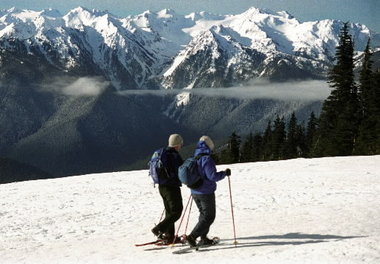One way to calculate how many calories you burn during an activity session is through the METs System. It is common to remember "seeing" METs on the treadmill, recumbent bike or elliptical. MET (Metabolic Equivalent of Task) incorporates the intensity and energy expenditure of an activity that is based upon an individual's age, height and weight.
First, you must understand what exercise is measured in METs. The MET is pre-measured and is based on the intensity you think you are working out at. Some METs have ranges. For example, if the MET range is between 6-9, this means that 6 is low intensity and 9 is the maximum intensity. Therefore, it is your decision to use the appropriate MET based on your intensity level.
Winter Sport METs include:
Ice Skating – 5-8
Downhill Skiing – 5-8
Cross Country Skiing – 6-12
Sledding / Tobogganing – 4-8
Snowshoeing – 9.9
In order to calculate the total calories burned in the MET equation, you need to know how to calculate your weight into kilograms.
The calculation is:
Weight in lbs. / 2.2 = weight in kg
Example:
200 lbs. / 2.2 = 90.9 kg
The MET calculation is:
MET x 3.5 x bodyweight (in kg) / 200 = kcalories burned per minute
Example Snowshoeing for a 200 lb person :
9.9 x 3.5 x 90.9 / 200 = 15.7 calories burned per minute
Next, if you want to know how many calories in the full session, calculate:
Calories burned per minute x minutes of activity = Total calories burned in that session
If the 200 lb. person snowshoed for 60 minutes the calculation below looks like:
15.7 x 60 = 942 calories burned in 60 minutes
For any questions on your calculations, please email Elizabeth at [email protected]
Add The Sports Daily to your Google News Feed!
